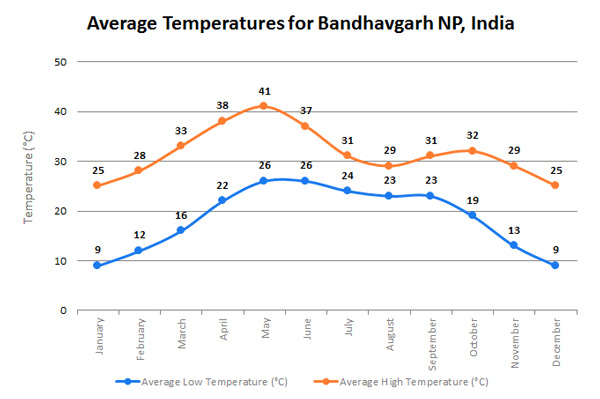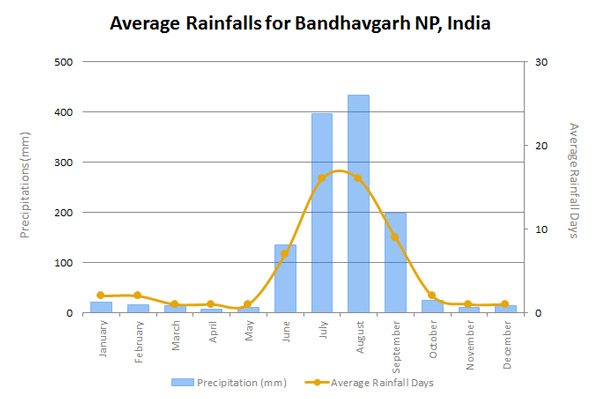Bandhavgarh National Park
Bandhavgarh National Park is a park with a rich historical past. Prior to becoming a National Park, the forests around Bandhavgarh had long been maintained as a Shikargah, or game preserve, of the Maharajas and their guests. In 1947, Rewa State was merged with Madhya Pradesh, leading Bandhavgarh to come under the regulations of Madhya Pradesh. The Maharaja of Rewa still retained his hunting rights till 1968 when this area became gazetted as a National Park.
The park, spread across 1,500 sqkm, is watered by small rivers and water holes, and has characteristic vegetation that is a combination of sal and bamboo forests.
Today, Bandhavgarh National Park is renowned for its high density of the Royal Bengal tiger population. The latest estimate indicates 44 to 49 tigers in this reserve – more than one tiger for every 2.4 sqkm. This reserve had among its most famous tigers Mohan, a white tiger due to a genetic anomaly, captured by the Maharadja of Rewa. Mohan is the genitor of all the white tigers in the world.
Apart from Royal Bengal tigers, blue bulls that are the favourite preys of the tigers, as well as sambar deers, chital deers, chinkara gazelles, barking deer, wild boar, leopard and sloth bears can also be found in this region. Along with the adjoining Panpatha Sanctuary, Bandhavgarh National Park was included under the Project Tiger Network in 1993.
Visitors can explore Bandhavgarh National Park by elephant, and also by safaris in vans and open jeeps. Activities such as trekking can also be undertaken through the natural trails in the unspoilt forests though travelling inside the park on foot or without a guide is prohibited.




